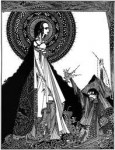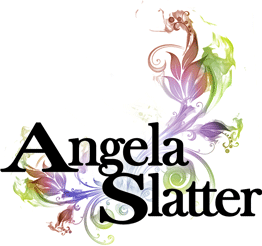 Yes, I know, strange saying, but it belong to my grandma Maisie and she was a font of strange sayings, many of which have been passed down to my mother, sister and I.
Yes, I know, strange saying, but it belong to my grandma Maisie and she was a font of strange sayings, many of which have been passed down to my mother, sister and I.
But back to my point – yes, I frequently have one, I just forget where I put it.
I’m sometimes pegged as a horror writer. Sure, I deal with dark themes in some (okay, all) of my work and I have some awful things happen in my stories, but when I read truly masterful horror writers I become very aware of my limitations. Although I think my work is disturbing, I don’t think it’s horrific.
I am currently reading (post-PhD) John Ajvide Lindqvist’s Handling the Undead. I read Let the Right One In a few years back, but hadn’t read anything else until last month when I read his story in A Book of Horrors. As with Let the Right One In I was stunned by its raw power and the writer’s ability to transmit horror in the simplest, cleanest terms – no great Gothic or Baroque strokes of language, no red neon arrows pointing out ‘Horror! Here!’ … just sparse, unadorned prose showing us the horrible potential of life, death and the unexpected.
One of the things that sticks with me from Let the Right One In was the scene where Virginia – one of the alcoholics of Blackeburg who’s bitten by Eli and turning into a vampire – struggles with her new appetite. She is such a rich creature and rare, she genuinely does not wish to harm another human – something made commonplace and meaningless in today’s growing pile of vampire literature and generally done to dull-dom – but Virginia does not give in. She turns the appetite inward and the scene where she cuts herself is one of the creepiest I’ve ever read; the pinnacle of horror. Plainly described and laid out for our viewing, it is so powerful it is almost painful to read.
This brings me to Handling the Undead, a zombie novel. Terrible, unreal, startling things happen, but it’s the touches of humanity that make Lindqvist such a master. People’s lives are so keenly observed and yet you don’t get overwhelmed with an avalanche of details – you just get the ones you need. The ones that will hurt you the most. The husband who loses his wife just when he is thinking how good his life is; the man whose grandson dies and with it his reason for living; the grandmother and granddaughter brought together by their strangeness, their apartness from the rest of society.
Handling the Undead is about the dead coming back – not just coming back randomly wandering around the local mall and trying to eats braiiinsss, but coming back to home, to us.
And this made me think about what we want when we wish for the dearly departed to return. We are selfish: we want an idea of them to come back. When we ache for what is gone, we think we will take them back no matter what, on any terms. We don’t necessarily want the reality of them back.
In true horror, we don’t get back the person we want – the person we remember. And the person we remember probably doesn’t bear much resemblance to the actual person they were – memory is imperfect, we fill in the gaps, we forget the things we didn’t like, we change them. We make the lost beloved better – sometimes worse. So when they do come back, they are truly not what we yearned for when we grieved
We realise, then, that we don’t want them back under any terms: the terror comes from having our desire for their return granted. In finding they are not what we wanted, we reject them and in that rejection is our final, our greatest betrayal. It was bad enough we didn’t remember them truly. Our refusal to acknowledge who our dead really were may be why they get so pissed off with us.
That’s what Lindqvist taps into and that’s why he’s awesome.

